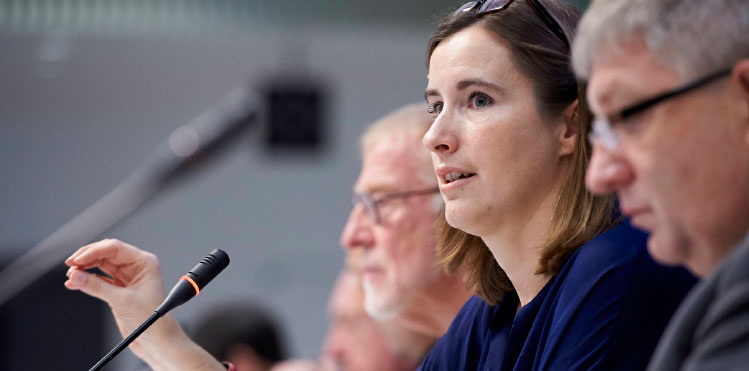
Emmanuelle Maire, Head of the Internal Market & Airports Unit, European Commission’s (EC) DG MOVE: “By 2035 more than 20 European airports will be running at or close to their capacity.”
With air traffic growing again, airport capacity has returned to the agenda, with the bulk of the media focus still on the UK’s ongoing capacity decision receiving a lot of attention, in parallel to ambitious hub projects in Turkey, Dubai and elsewhere. EUROCONTROL’s most recent report on airport capacity finds that passenger traffic will grow by 50% between now and 2035, while airport capacity will only grow by 17%. By their estimate, this will leave 12% of demand unaccommodated – equivalent to 237 million passengers unable to fly. The congestion in the network will mean increased delays (average six minutes), which will in turn have a negative ripple effect on the network (and compromise progress on the EU’s flagship aviation project, the Single European Sky). All of which adds up to a potential €230 billion in lost GDP. At a time when the EU is all about creating growth and jobs, a discussion about a way to avoid the airport capacity crunch seems timely.
Speaking at the opening of the EESC hearing on airport capacity, Angelo Ricci (Italy currently holds the Presidency of the Council of the EU) spoke of their commitment to ongoing negotiations regarding the EU’s flagship aviation project, the Single European Sky (SES) and the role of airport capacity in that. He admitted there is still a general political difficulty in convincing Member States to fully implement Functional Airspace Blocks (FABs).
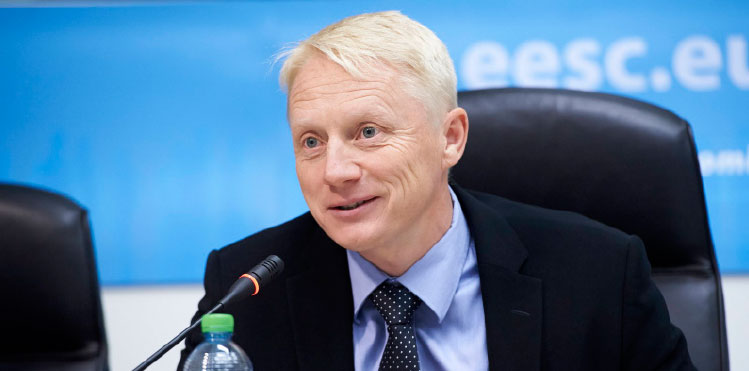
Margus Rahuoja, Director of Air Transport, DG MOVE, European Commission: At the request of the European Commission, the European Economic and Social Committee EESC will produce an opinion on airport capacity.
EUROCONTROL’s Head of Performance, Forecasting and Relations, Brian Flynn also spoke of the need to fully implement the SES, stressing that this is vital to securing better use of existing capacity. Airports are still isolated to some extent from the Air Traffic Management network. Closer cooperation and more data sharing would help to secure the predictability needed in order to use capacity in a more effective way. The growing of number of European airports who have fully implemented Airport Collaborative Decision-Making (A-CDM) (15 airports) is a very positive step in this direction.
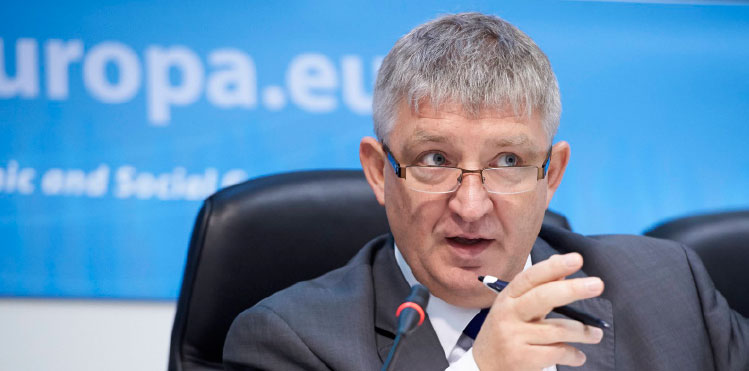
Jacek Krawczyk, President of the EESC Employers’ Group and the EESC rapporteur on Airport Capacity: “The only way to optimise and rationalise airport capacity is through the European approach. A regional or national approach will fail.”
At the request of the European Commission, the European Economic and Social Committee (EESC) will produce an Opinion on airport capacity. Mr. Jacek Krawczyk, President of the EESC Employers’ Group has been appointed rapporteur for the opinion. At the hearing, Krawczyk spoke passionately on the issue, saying “The only way to optimise and rationalise airport capacity is through the European approach. A regional or national approach will fail”. He expressed his disappointment that not enough data are available on that important issue.
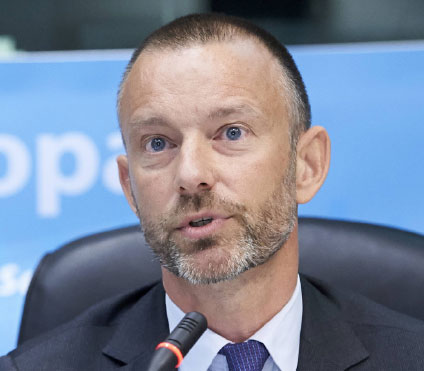
Olivier Jankovec, Director General ACI EUROPE: “Look at the levels of investment in airport infrastructure in the Middle-East, Asia and Latin America. Look at the growing economic power and influence of these regions. We are falling behind.”
In his speech, Olivier Jankovec, Director General ACI EUROPE, sounded the alarm about the level of investment in airport capacity and the long term nature of implementation of new airport capacity. He commented “Capacity was not on the radar for a while due to the economic crisis. When air traffic dropped so severely, no one wanted to hear about new investments in infrastructure. Five years on, we are seeing a significant recovery in traffic – but our politicians need to wake-up to the reality of the looming airport capacity crunch facing Europe. Look at the levels of investment in airport infrastructure in the Middle-East, Asia and Latin America. Look at the growing economic power and influence of these regions. We are falling behind”.
Jankovec also stated that optimising existing capacity and other mitigation measures (high speed trains, better usage of secondary airports, smoothing of airports schedules) are only part of the solution. Europe needs more airport capacity and if it doesn’t build it, it will only serve as a further risk to the continent’s relevance in the new world order. Jankovec also spoke of the work that the industry is doing to reduce its carbon footprint, through ACI EUROPE’s carbon certification standard, Airport Carbon Accreditation.
“To provide growth we have to extend capacity,” stated Birgit Otto, Executive Vice President & Chief Operations Officer at Amsterdam Airport Schiphol. In the short term, the airport is optimising its capacity through implementing A-CDM, by upgrading aircraft stands to accommodate larger aircraft, reconfiguring the departure halls, enlarging baggage systems and reclaim hall capacity, and improving the quality of service for passengers. Looking at the long term, a number of solutions are needed: implementation of the SES and SESAR and airport master-planning – support for main airports and hub carriers. Schiphol also opts for the use of regional airports to provide relief capacity. Ms Otto emphasised the role of public dialogue in obtaining support for further growth of the airport. It was only due to public consultations that the master plan for further development of the airport could be approved.
Emmanuelle Maire, Head of the Internal Market & Airports Unit at the European Commission’s (EC) DG MOVE, moderated the second session of the hearing entitled “Europe’s airport landscape of the future: opportunities and risks”. She explained that the European Observatory on Airport Capacity, was set up seven years ago by the EC to address the issue, and underlined the urgency of the issue, saying “By 2035 more than 20 European airports will be running at or close to their capacity”. A number of projects linked to airport capacity were presented by Turkish Airlines, and Swedish Air Transport Society. Fiona McFadden from the SESAR Joint Undertaking presented the latest projects within SESAR for improving the use of existing capacity both on the ground and in the air.
Margus Rahuoja, the recently appointed Director of Air Transport, DG MOVE at the European Commission concluded the hearing. The Opinion of the EESC is currently scheduled to be adopted in mid-December. Vanessa Haumberger of Munich Airport is the airport industry expert assisting the EESC.
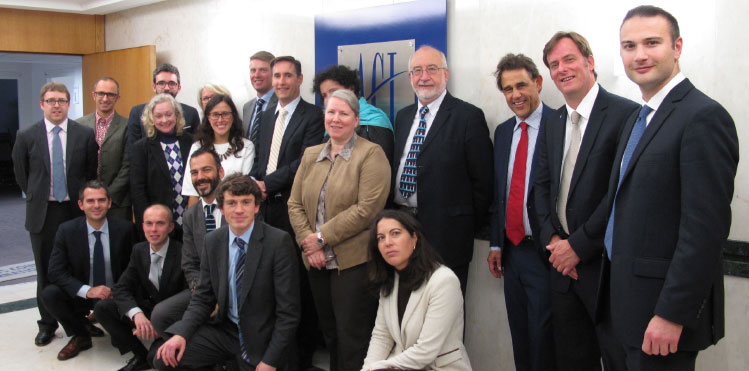
Representatives of various stakeholders, including ACI EUROPE, participated in Task Force I Meeting of the EU Observatory on Airport Capacity.
In the meantime, ACI EUROPE hosted a meeting of the EU Observatory on Airport Capacity on 23 October, where all the key stakeholders were present to discuss the work of Taskforce 1. Taskforce 1 is jointly chaired by ACI EUROPE and Airport Regions Conference (ARC) and it is focused on ‘The Economic impact of unaccommodated demand and environmental variables influencing airport capacity’.







